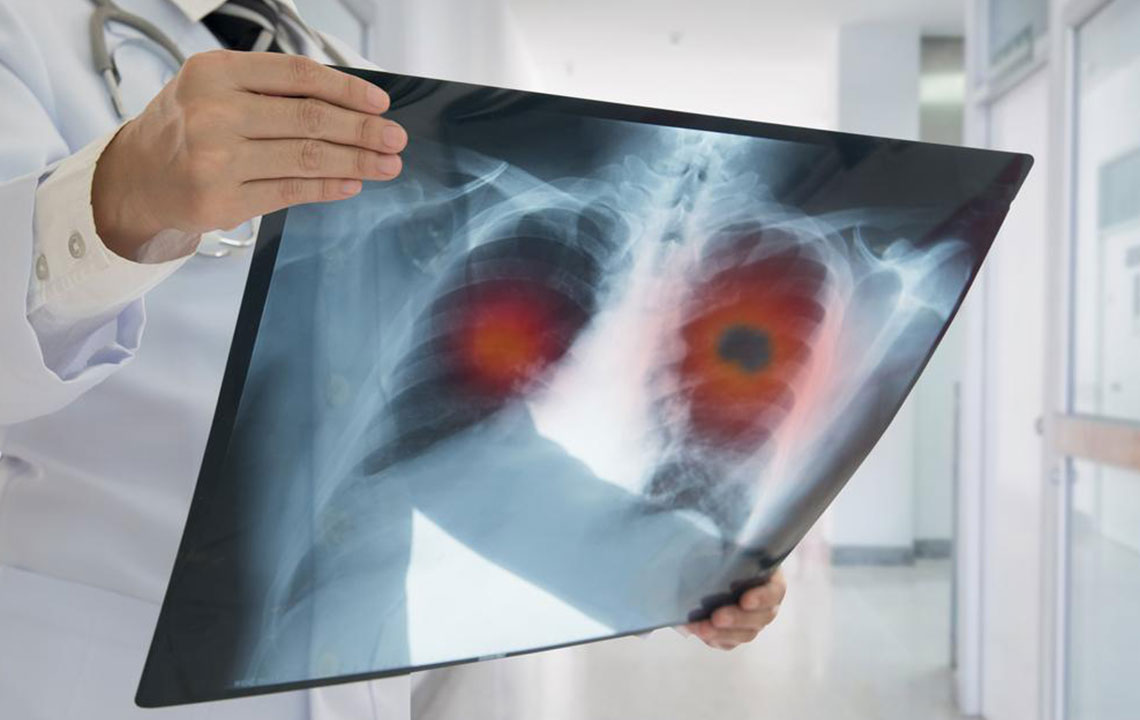Symptoms and Treatments for Non-Small Cell Lung Cancer

Lung cancer begins when the lung cells grow to be abnormal and multiply uncontrollably. As there is a rapid growth of the cancerous cells in the body, tumors form and start spreading to other areas of the body. There are different types of lung cancer such as Adenocarcinoma, Squamous cell carcinoma, large cell carcinoma, and other subtypes such as sarcomatoid carcinoma and adenosquamous carcinoma. This non-small cell lung cancer is less common as compared to the other types.
- Adenocarcinoma
Majority of lung cancer cases are of adenocarcinomas. They can occur in many parts of the body. These cancers occur in current or former smokers mainly, however, they are found in non-smokers as well. This cancer affects women more than men, and among other cancers, this cancer affects younger people more. - Squamous cell carcinoma
Of all the lung cancers, the occurrence of squamous cell carcinoma is 20% to 30% in people. This cancerous cells start affecting the flat cells and lie inside the lung airways. This cancer is linked to the history of smoking and is mostly found in central part of the lungs. - Large cell carcinoma
This cancer covers 10% to 15% of all lung cancers. This cancer can occur in any part of the lung. It grows and spreads to other parts of the body quickly, which makes it hard to treat.
An early treatment for non-small cell lung cancer is important before it gets to a higher stage and incurable. For that reason, knowing the symptoms becomes important. There are several non-small cell lung therapies and treatments that can be used if this cancer is detected at an early stage.
Symptoms of non-small cell lung cancer
- Endless coughing is one of the primary symptoms of non-small cell lung cancer. Though many may confuse this with one of the smoking side-effects, but if you see persistent coughing, it is advisable to get it checked for the same. For those who don’t smoke should take this as a clear indication and get themselves checked.
- Unexplained weight loss is another symptom of non-small cell lung cancer. Sudden weight loss alone or along with another symptom of non-small cell lung cancer should be taken seriously before it worsens the situation. If diagnosed early, a non-small cell lung cancer therapy and treatment can help with cure and treatment.
- There are neurological symptoms that shouldn’t be missed if you want to get effective therapy and treatment for non-small cell lung cancer. If there are headaches and seizures, numbness and weakness in the limbs, it could be an early sign of non-small cell lung cancer.
- Fatigue can be experienced for many reasons, and one of them could be cancer. Hence, if there is a combination of fatigue and another symptom of the lung cancer, you must get a check-up done. If your fatigue is an independent symptom, but unexplained, you must take that as an indication and get it diagnosed.
Treatments for non-small cell lung cancer
Coming to the non-small cell lung cancer therapy, there are a few therapies that are used to treat this type of lung cancer. One of the therapies is targeted therapy. Targeted therapy is a special type of chemotherapy where drugs are used to stop cancer from growing further or spreading. This is done by targeting specific proteins or genes. These genes and proteins are found in the cancerous cells and/or in blood vessel cells that are related to cancer growth.
Although targeted therapy for non-small cell lung cancer is an effective therapy, there are certain challenges that doctors come across during the treatment.
A targeted treatment does not work when doctors do not find a tumor at the right spot. There are times that doctors may use other types of treatment to cure this disease. Apart from therapies and treatments, there are clinical trials that are run to help to carry on effective research on the non-small cell lung cancer and its treatments. These clinical trials include the testing of several drugs to see which ones are more appropriate for treating non-small cell lung cancer.
For people who have family members with lung cancer or who themselves are suffering from lung cancer can get help from local and national centers that help with many issues that may come up related to cancer. These centers help people with resources from where they can get emotional support, financial help, transportation assistance, housing and lodging help, children’s services, home health care, hospice services and more to tackle lung cancer. These resources can be found through the health care team and local/country government.


